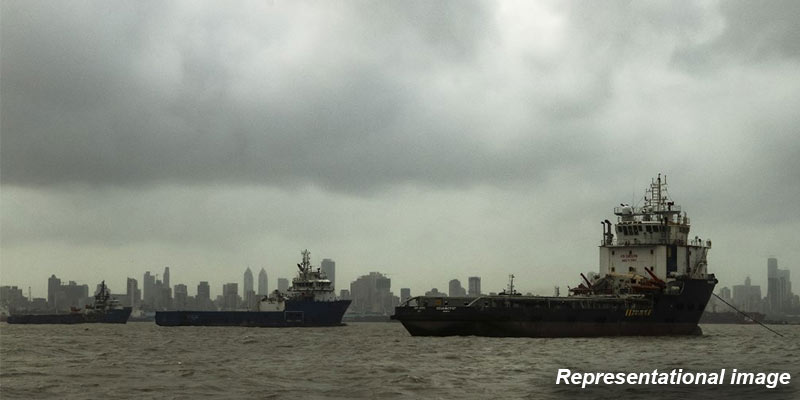- India
- Sep 07
- Kevin Savio Antony
Explainer - India-Middle East-Europe Economic Corridor (IMEEC)
India-Middle East-Europe Economic Corridor (IMEEC) is an important initiative that can add to India’s maritime security and faster movement of goods between Europe and Asia. This was stated by Union Minister of Commerce & Industry, Piyush Goyal at the Confederation of Indian Industry (CII) India-Mediterranean Business Conclave 2024 in New Delhi.
What is IMEEC?
• The IMEEC was launched during India’s G20 presidency and aims to integrate India, the Europe, the Middle-East through UAE, Saudi Arabia, Jordan, Israel and the European Union.
The initiative will consist of two separate corridors:
i) Eastern Corridor connecting India to West Asia/Middle East.
ii) Northern Corridor connecting West Asia or Middle East to Europe.
• The IMEEC is expected to stimulate economic development through enhanced connectivity and economic integration between Asia, the Arabian Gulf, and Europe.
• It will include a railway that, upon completion, will provide a reliable and cost-effective cross-border ship-to-rail transit network to supplement existing maritime and road transport routes.
• It will enable transhipment of goods and services to, from, and between India, the UAE, Saudi Arabia, Jordan, Israel, and Europe.
• In support of this initiative, the participating countries commit to work collectively and expeditiously to arrange and implement all elements of these new transit routes, and to establish coordinating entities to address the full range of technical, design, financing, legal and relevant regulatory standards.
• Along the railway route, the participants intend to enable the laying of cable for electricity and digital connectivity, as well as pipe for clean hydrogen export.
• This corridor will secure regional supply chains, increase trade accessibility, improve trade facilitation, and support an increased emphasis on environmental, social, and government impacts.
• It is expected that the corridor will increase efficiencies, reduce costs, enhance economic unity, generate jobs, and lower greenhouse gas emissions — resulting in a transformative integration of Asia, Europe and the Middle East.
• India, the US, Saudi Arabia, UAE, the European Union, Italy, France, and Germany are the key signatories driving this initiative.
Key Ports to be Connected:
• India: Mundra (Gujarat), Kandla (Gujarat), Jawaharlal Nehru Port Trust (Navi Mumbai).
• Middle East: Fujairah, Jebel Ali, and Abu Dhabi (UAE), Dammam and Ras Al Khair (Saudi Arabia).
• Railway Connection: Fujairah port (UAE) to Haifa port (Israel) via Saudi Arabia and Jordan.
• Israel: Haifa port.
• Europe: Piraeus (Greece), Messina (Italy), and Marseille (France).
Objectives:
• Establish a reliable, cost-effective ship-to-rail transit network.
• Improve transportation efficiency by reducing transit times and costs.
• Boost economic integration across Asia, Europe, and the Middle East.
• Lower greenhouse gas emissions through efficient transport solutions.
• Create employment opportunities through enhanced connectivity and trade.
Geopolitical implications of IMEEC:
• The IMEEC is viewed as a counter to China’s Belt and Road Initiative (BRI), offering an alternative route for trade and investment in the Eurasian region. This will reduce China’s growing influence, particularly in areas with strong US ties.
• By linking continents, IMEEC strengthens political, economic, and cultural ties across Asia, the Middle East, and Europe. This enhances regional cooperation and provides the US with a mechanism to engage deeply in the region.
• The corridor bypasses Pakistan, overcoming India’s long-standing challenge of overland access to the West. This promotes India’s geostrategic engagement with the broader region.
• The corridor deepens India’s engagement with Saudi Arabia, UAE, and other nations in the Arabian Peninsula, strengthening political and strategic ties in the region.
• IMEEC holds the potential to foster greater cooperation and possibly reduce political tensions in the Arabian Peninsula by promoting mutual economic interests.
• IMEEC’s model could extend to Africa, aligning with plans for a Trans-African Corridor, promoting India’s engagement in the continent’s infrastructure development and increasing its geopolitical significance.
Economic Implications:
• IMEEC is expected to significantly reduce transit times for trade, making India’s exports to Europe faster by up to 40 per cent compared to the Suez Canal route.
• An efficient transportation network will foster industrial growth in regions connected to the corridor, easing the movement of goods, raw materials, and finished products.
• The Improved connectivity will lead to increased economic activities and job opportunities in sectors like logistics, infrastructure, and allied industries.
• The corridor will enhance energy and resource access from the Middle East, stabilising energy supplies and promoting economic growth in India.
• The Strategic Special Economic Zones (SEZs) along the route could attract foreign investment, bolster manufacturing, and drive economic growth in these designated zones.
Challenges to the IMEEC:
• Integrating rail, road, and sea transport across multiple countries presents logistical challenges, especially in selecting viable routes and ensuring seamless connectivity.
• Substantial portions of the rail network in the Middle East are missing, requiring extensive construction efforts and significant investments to complete the infrastructure.
• Coordinating policies, regulations, and logistics among diverse countries with different interests and administrative procedures is a major hurdle.
• Established transport routes like the Suez Canal could oppose IMEEC as it threatens to reduce traffic and revenue. Diplomatic challenges could arise as a result.
• The estimated cost of developing IMEEC ranges from $3 billion to $8 billion, depending on the routes. Securing adequate funding for construction, operation, and maintenance is a key concern.
(The author is a trainer for Civil Services aspirants.)

